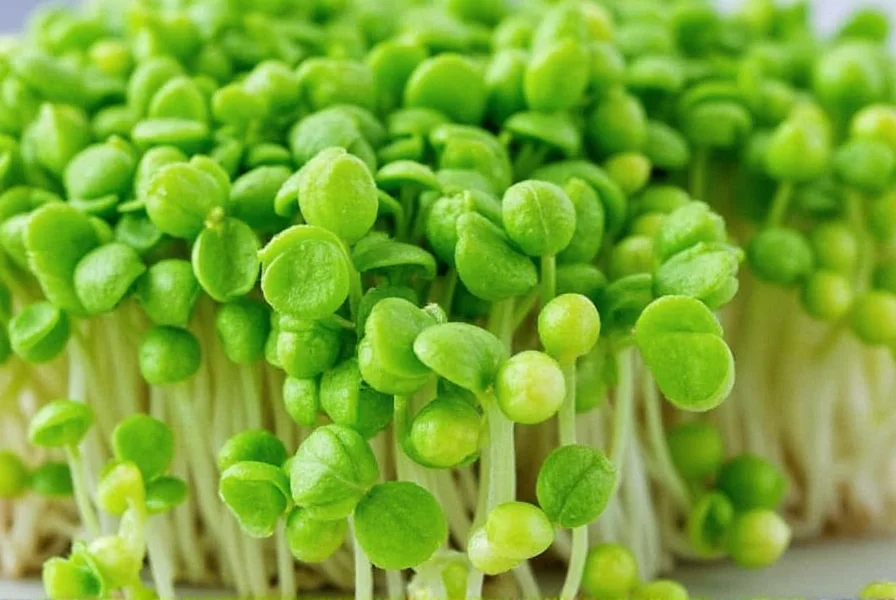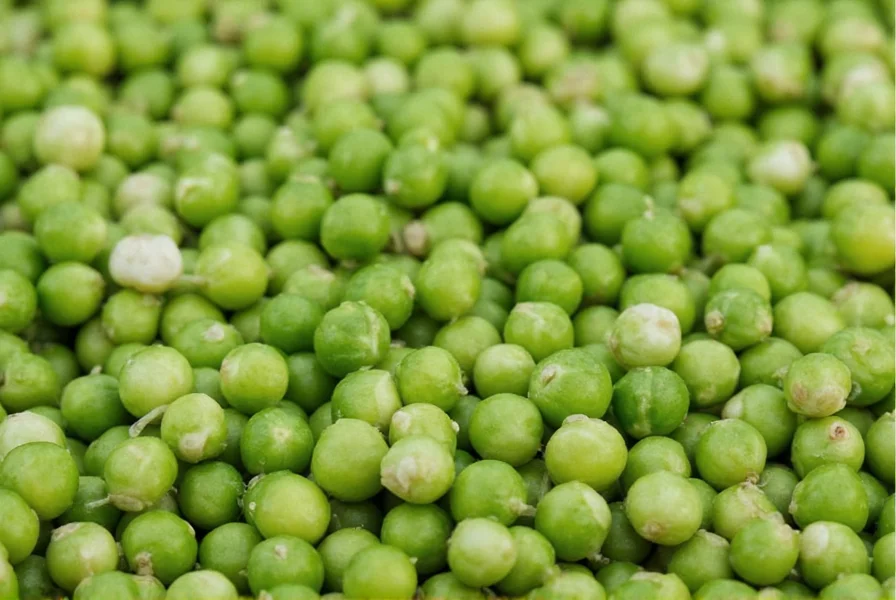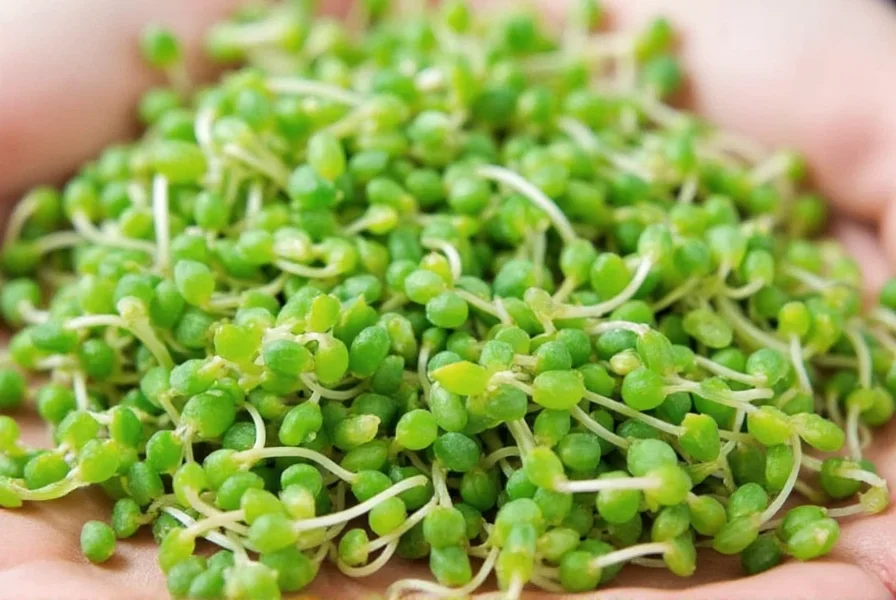Clover sprouts have gained popularity among health-conscious eaters seeking nutrient-dense additions to their diets. Unlike mature clover plants which contain compounds that can be problematic in large quantities, the sprout stage offers concentrated nutrition with minimal risk when consumed in moderation. These delicate sprouts provide a versatile culinary ingredient that enhances both flavor and nutritional value of various dishes.
Nutritional Profile and Health Benefits
Clover sprouts deliver impressive nutritional value in a low-calorie package. A single cup (30g) serving contains approximately:
| Nutrient | Amount per Serving | Daily Value % |
|---|---|---|
| Calories | 8 | 0.4% |
| Protein | 1.2g | 2.4% |
| Vitamin K | 15mcg | 12.5% |
| Vitamin C | 6mg | 6.7% |
| Folate | 18mcg | 4.5% |
The standout health benefits of clover sprouts stem from their rich content of bioactive compounds. These sprouts contain significant levels of isoflavones, particularly formononetin and biochanin A, which function as phytoestrogens. Research suggests these compounds may help reduce menopausal symptoms, improve bone density, and support cardiovascular health by improving cholesterol profiles.
Unlike many commercially available sprouts, home-grown clover sprouts allow complete control over the growing process, eliminating concerns about contamination that occasionally affect mass-produced sprout varieties. This makes understanding clover sprout growing instructions valuable for health-conscious consumers.
How to Grow Clover Sprouts at Home
One of the most appealing aspects of clover sprouts is their ease of cultivation. Growing your own ensures freshness and eliminates food safety concerns associated with commercial sprout production. Follow these simple steps for successful home cultivation:
- Soak 2-3 tablespoons of organic clover seeds in filtered water for 6-8 hours
- Drain and rinse seeds thoroughly, then place in a sprouting jar or tray
- Rinse and drain twice daily, keeping seeds moist but not waterlogged
- Keep jar at room temperature away from direct sunlight
- Harvest when sprouts reach 1-2 inches with green leaves (typically 4-7 days)
- Rinse thoroughly before consumption to remove seed hulls
For optimal results when learning how to grow clover sprouts at home, maintain proper hygiene throughout the process. Use only food-grade sprouting seeds, sterilize equipment before use, and ensure adequate drainage to prevent bacterial growth. The ideal temperature range for sprouting is 65-75°F (18-24°C).

Culinary Applications and Recipe Ideas
Clover sprouts offer a mild, slightly sweet flavor that complements rather than overwhelms other ingredients. Their delicate texture makes them perfect for raw applications where you want to preserve their nutritional content. Consider these creative ways to incorporate clover sprouts into your meals:
- Add to sandwiches and wraps for crunch without overpowering flavors
- Top avocado toast for added nutrition and visual appeal
- Blend into smoothies for a nutrient boost (use before leaves fully develop)
- Create vibrant salads with complementary ingredients like citrus, nuts, and light vinaigrettes
- Use as garnish for soups and main dishes to add freshness
When exploring clover sprouts recipe ideas, remember that their delicate nature means they're best added at the end of preparation or served raw. Cooking diminishes their nutritional value and delicate texture. For maximum flavor and nutrition retention, consume within 2-3 days of harvest.
Safety Considerations and Proper Consumption
While generally safe for most people, understanding are clover sprouts safe to eat requires some important considerations. Clover sprouts contain coumarin compounds that can act as blood thinners in large quantities. People taking anticoagulant medications should consult their healthcare provider before consuming significant amounts.
Additionally, like all sprouts, clover sprouts carry a potential risk of bacterial contamination if not handled properly. To minimize this risk:
- Always rinse sprouts thoroughly before consumption
- Store in the refrigerator and consume within 3-5 days
- Discard sprouts that develop off odors or slimy texture
- Consider lightly steaming if you have compromised immunity
Pregnant women, elderly individuals, and those with weakened immune systems should exercise caution with all raw sprouts, including clover varieties. When in doubt about the best way to eat clover sprouts for your specific health situation, consult a healthcare professional.
Comparing Clover Sprouts to Other Common Varieties
Understanding how clover sprouts compare to other popular sprout varieties helps determine when they might be the best choice for your nutritional needs and culinary applications.
| Sprout Type | Flavor Profile | Key Nutrients | Best Culinary Uses |
|---|---|---|---|
| Clover | Mild, slightly sweet | Vitamins K, C, folate, isoflavones | Salads, sandwiches, garnishes |
| Alfalfa | Nutty, earthy | Vitamins A, C, K, minerals | Wraps, salads, sandwiches |
| Broccoli | Pungent, slightly spicy | Sulforaphane, vitamins A, C, K | Salads, smoothies, as supplement |
| Mung Bean | Neutral, slightly sweet | Protein, vitamin C, iron | Cooked dishes, stir-fries, soups |
When considering clover sprouts vs alfalfa sprouts, note that clover sprouts typically have a milder flavor and higher isoflavone content, while alfalfa sprouts offer more vitamin K and a slightly earthier taste. Both provide excellent nutritional benefits but work best in different culinary applications based on their flavor profiles.

Maximizing Nutritional Benefits
To get the most nutritional value from clover sprouts, follow these evidence-based recommendations:
- Consume raw to preserve heat-sensitive nutrients like vitamin C
- Eat within 2-3 days of harvest for peak nutrient density
- Pair with vitamin C-rich foods to enhance iron absorption
- Store in airtight containers with a paper towel to absorb excess moisture
- Harvest when leaves are just beginning to green for optimal nutrient balance
Research indicates that sprouts reach their peak nutritional value at specific growth stages. For clover sprouts, the optimal harvest window is when the first true leaves appear but before they fully develop. This timing maximizes the nutritional value of clover sprouts while maintaining their delicate texture and mild flavor.
Frequently Asked Questions
How long do clover sprouts stay fresh after harvesting?
Properly stored clover sprouts remain fresh for 3-5 days when kept in an airtight container in the refrigerator with a paper towel to absorb excess moisture. Rinse them just before use, not before storage, to maximize freshness. Discard if they develop any slimy texture or off odors.
Can I eat clover sprouts if I'm on blood thinners?
Clover sprouts contain vitamin K and coumarin compounds that can interact with blood-thinning medications like warfarin. If you're taking anticoagulants, consult your healthcare provider before consuming clover sprouts regularly. They may recommend consistent but limited consumption to avoid interfering with your medication.
What's the difference between red clover and white clover sprouts?
Red clover sprouts typically have a slightly stronger flavor and higher isoflavone content compared to white clover sprouts, which tend to be milder and more delicate. Both varieties offer similar nutritional profiles, but red clover contains more formononetin while white clover has slightly higher biochanin A levels. Culinary applications are generally interchangeable.
Do clover sprouts need to be cooked before eating?
Clover sprouts are best consumed raw to preserve their nutritional content and delicate texture. Cooking diminishes their vitamin content and changes their texture. However, if you have concerns about food safety due to compromised immunity, lightly steaming them for 30-60 seconds can reduce potential bacterial risks while preserving most nutrients.
How do I prevent mold when growing clover sprouts at home?
To prevent mold when growing clover sprouts, ensure proper drainage after each rinse, maintain room temperature between 65-75°F (18-24°C), provide adequate air circulation, and rinse twice daily with cool, clean water. Using a sprouting jar with a mesh lid rather than a solid container helps prevent excess moisture buildup that leads to mold growth.











 浙公网安备
33010002000092号
浙公网安备
33010002000092号 浙B2-20120091-4
浙B2-20120091-4